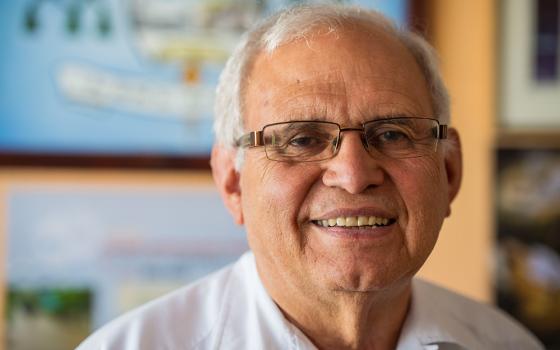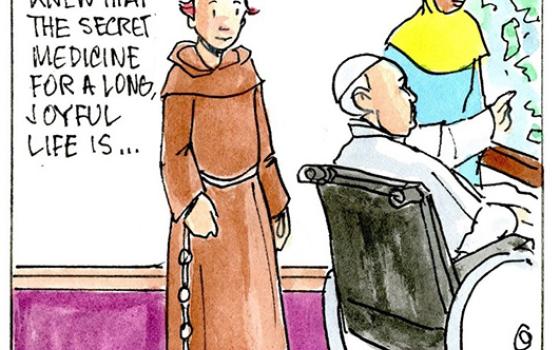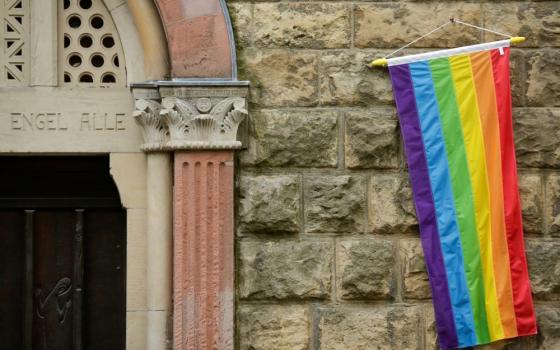A United Press release told the story of a hospital in a Midwestern city where officials had discovered that its fire-fighting equipment had never been connected to the city's water main. For 35 years the patients and medical staff had felt safe at the sight of those brightly polished brass valves and outlets placed throughout the hospital. Yet the security of all this expert fire-fighting technology was an illusion, for all of it was connected to an underground pipe that extended only four feet from the hospital before it stopped. Most Christians feel just such surety at the sight of a cross – never questioning its effectiveness. The issue for us isn't whether images of the cross are connected to the source, but rather how we are connected to the cross. Are we linked to the cross only remotely, as a symbol that no longer speaks to us, or are we intimately united with it? During Lent, churches frequently put up large, rugged wooden crosses draped with purple cloths. The Roman cross, which was once a shockingly hideous image, can easily become impotent today, unable to move those who see it to greater zeal, heroism, or prayer. Perhaps our Lenten cross would be radically enlivened if, rather than using a long purple cloth, we draped it instead with a serpent.
Most Christians feel just such surety at the sight of a cross – never questioning its effectiveness. The issue for us isn't whether images of the cross are connected to the source, but rather how we are connected to the cross. Are we linked to the cross only remotely, as a symbol that no longer speaks to us, or are we intimately united with it? During Lent, churches frequently put up large, rugged wooden crosses draped with purple cloths. The Roman cross, which was once a shockingly hideous image, can easily become impotent today, unable to move those who see it to greater zeal, heroism, or prayer. Perhaps our Lenten cross would be radically enlivened if, rather than using a long purple cloth, we draped it instead with a serpent.
In today's gospel (John 3:14-21), Jesus is compared to such a serpent intertwined on the cross. This shocking image comes from the time when the Israelites were complaining about their difficulties in the desert after their exodus from Egypt and were punished with a plague of venomous serpents.
They pleaded to Moses for help and God instructed him to make a serpent out of bronze and to place it on a pole. Any who were bitten and looked upon it were healed. The author of John’s gospel compares the healing salvation brought by Jesus being lifted up on the cross to the bronze serpent of Moses and his people in the desert.
The cross of Christ is a boundless source of healing if you are connected to it. This symbol of suffering is transformed in either the form of the Tau cross, which prophetically symbolizes that we now live in the reign of God, or the cross of Calvary by which Christ overcame death itself.
Have you ever had a personal experience of being liberated or healed from some paralyzing illness or addiction and then realized that your healing was connected with the cross in your room or home? Consider the practice of consciously uniting your suffering, whether it stems for the crippling pain of arthritis or a throbbing migraine headache, to the source of healing – the cross. One simple ritual would be to touch your fingers to your cross and pray that united your pains with those of Christ will be a redemptive Holy Communion.
– from The Lenten Pharmacy by Fr. Ed Hays
 Prayer:
Prayer:
O God, we confess that we have often questioned
whether we are truly worthy of your great love,
for we have so often rejected our own crosses.
We have judged them to be too heavy or too shameful,
or as terrible burdens from which to escape.
May we see that in your holy design for redemption
our crosses are joined to the cross of Christ
as holy instruments of our baptism
into his life, death and resurrection.
May we then gratefully embrace our crosses with joy.
This week's mantra:
I follow you O Christ because by joining my crosses to yours,
I help reconcile the world to God.
– prayer and mantra from The Pilgrimage Way of the Cross by Fr. Ed Hays
~~~~~~~~~~~~~~~~~~~~~~~~~~~~~~~~~~~~~~~~~~~~~~~~~~~~~~~~~~~~~~~~~~~~~~~~~~~~~~~
SIGN UP NOW to receive an e-email alert each week of Lent directing you to Fr. Hays' reflection. Enrich your Lenten journey this year.
 Want to know more about Fr. Ed Hays?
Want to know more about Fr. Ed Hays?
--Read a profile on Fr. Hays
Visit Ave Maria Press for a full selection of books by Fr. Hays.



